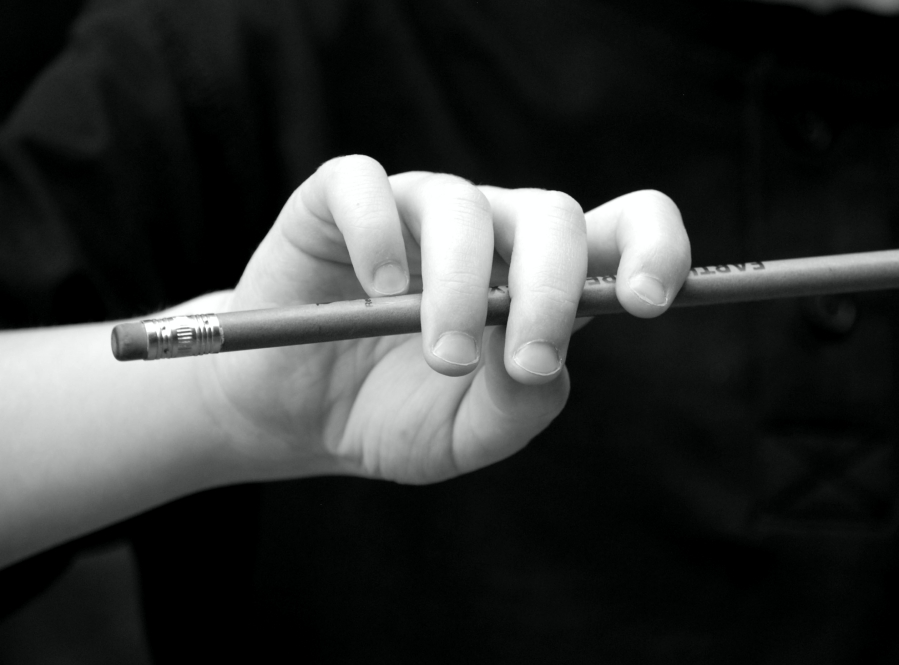How does tapping maintain the bowhold?
I took a training years ago whose primary focus was two dozen quick, seemingly simple activities with the just bow.
There were many exercises whose purpose was not obvious to me. Okay, honestly, most of them.
Like … what function could it possibly serve to tap each finger of the bow hand? And what does bouncing the bow sideways have to do with tone production?

It was obvious the trainer had found a system of gears and knobs I’d never seen before. But there were no explanations. Just a cute little code book with drawings in it.
I had to sit in the back of the room because my inner Pythagoras was shouting a bunch of things in Greek that I’m pretty sure I shouldn’t repeat.
Why did these things work?
Feeling a bit sheepish at first, I tried the tapping exercise with my students. It sounds trivially easy. Turns out it’s quite a clown car. The pinky misses the stick. The index finger climbs up the bow or unfolds. The thumb ends up across from the ring finger. The non-tapping fingers move around, tilt sideways, straighten out, or fall completely off.
And, it helped my students’ bowholds.
By now my inner Pythagoras had had some time to temper his vexation. But I could see him pacing whenever THOSE bowhold exercises came up in lesson. Finally he sat himself down under an apple tree, furrowed his eybrows, and refused to budge until he figured it out.
I know not everyone is tortured by such questions. But I generally get out of his way when he’s on a rant. Partly because … those eyebrows. And partly because when he discovers one thing, it often unlocks others.
Before I reveal what I think is happening with the tapping, I invite you to find an apple tree to sit under and write down what you think. (Otherwise the answer will seem obvious in hindsight.)
Think about it …
No scrolling! Really truly consider why it works.
One more minute …
Okay. So here’s what Pythagoras came up with, a few falling apples later. As you will see, although he is dead, he’s been keeping up with the recent brain science:
- First, students generally aren’t consciously aware of their finger placement – at least not in detail. Asking the fingers to strike the same spot each time brings this into awareness.
. - Children’s brains prune away thousands of nervous system synapses each day. That’s why bowholds migrate into funny shapes once the child is focused on other things. Bringing consistent attention to the bowhold, even in a trivial way, tells the brain, “Don’t prune here, please!”
. - The “factory default” brain map of the hand looks a bit like a paw with a thumb. The individual fingers are barely sketched out. Moving each finger independently develops novel pathways. It is literally creating a more detailed somatosensory map.
. - But why do the non-tapping fingers move? Given that the brain groups the fingers into a paw, the “passive” fingers are not actually passive. The student basically has to hold them in place until they become independent.
Over the years I’ve elaborated and refined those bowhold exercises and added my own. They’ve made a huge difference in my students’ comfort and gracefulness with the bow. I’d love to share every single single tip with you.
But here we are, two delightful sitting behind our screens. Do we really have to do this over email? Let’s hang out.
I offer an online Book 1 workshop augmented with live teacher training. You can take the course on a flexible schedule, at your own pace. The course includes everything I’ve figured out over two decades of teaching beginners.
These tools will make your whole year easier. And more fun. I hope to see you inside!
I hope to see you there!
